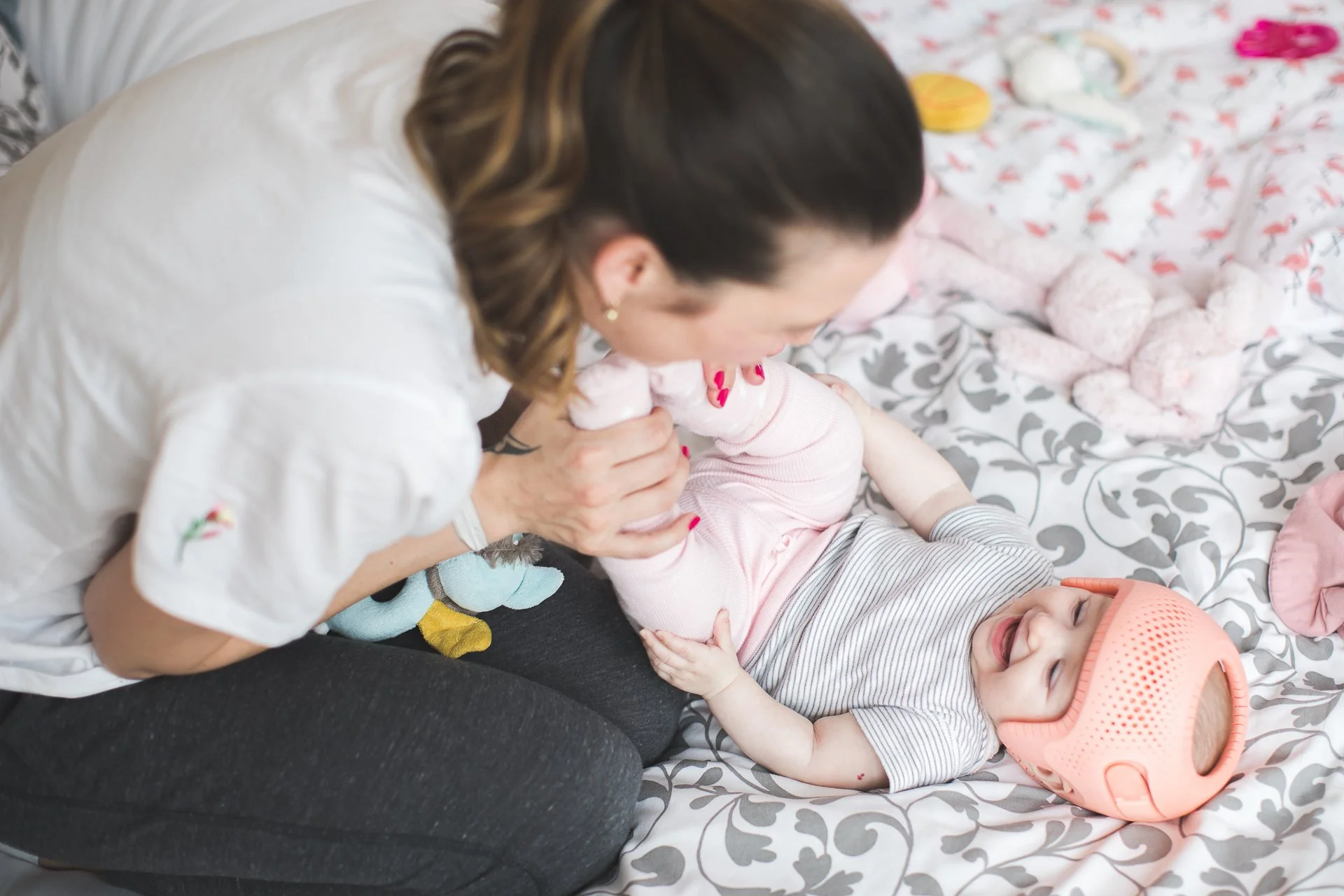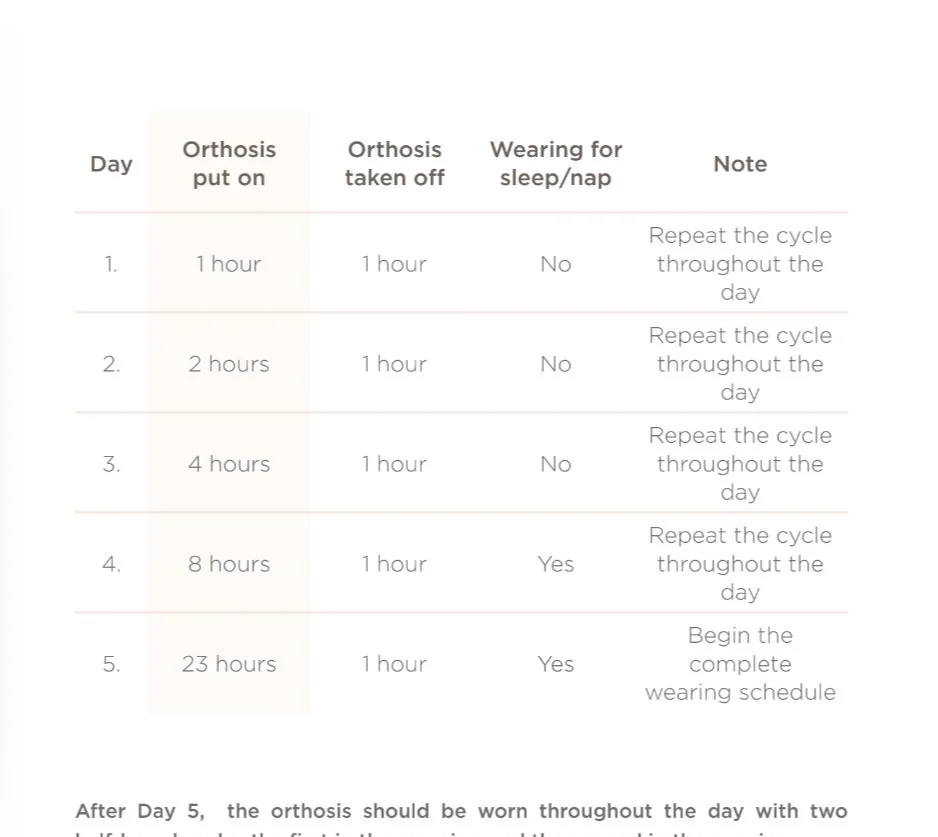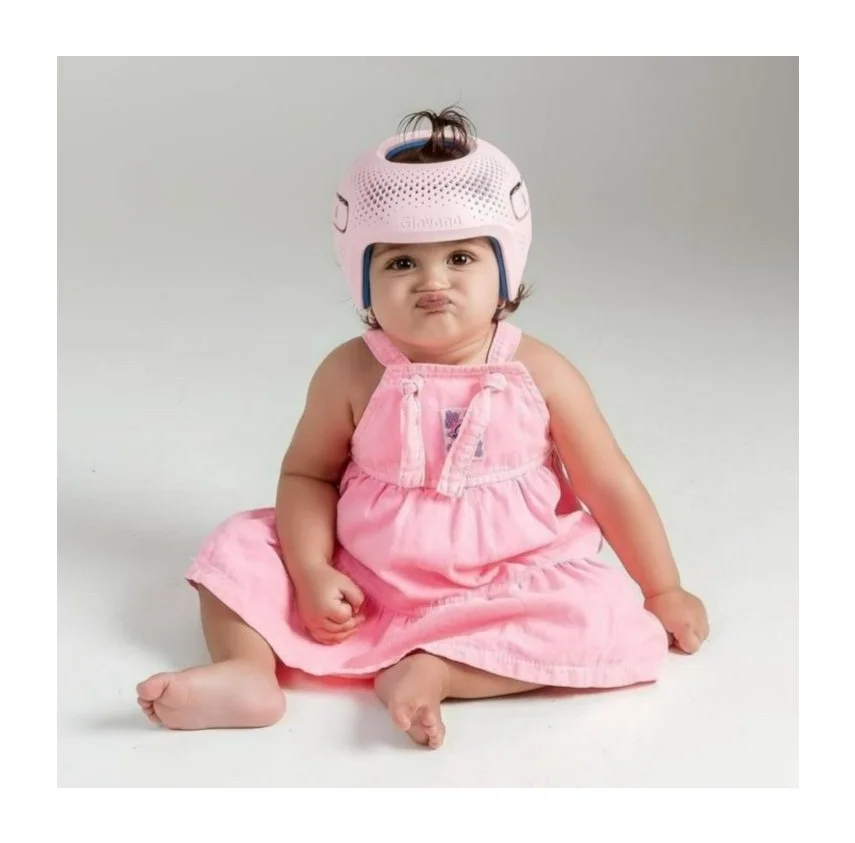
Cranial Remolding Orthoses
For children aged between 3 and 18 months
Head shape deformities became more frequent after the Back to Sleep Program focused on preventing SIDS*. Nowadays, more than 3% of newborn babies** have a severe or very severe head shape deformity. Up to 50% have a mild or medium deformity.
Cranial Remolding Orthoses are lightweight and patient-specific. The inner part of the orthosis is round-shaped, allowing the child to sleep and move without any pressure on the flattened area of the head. The orthosis does not interfere with any children’s activities and most parents say that their child adapted quickly.
Research*** shows that orthotic treatment using a helmet is the most effective solution for a severe head shape deformity. The cranial orthosis offers a simple solution for children with an abnormal head shape. The head becomes more symmetrical when its growth is guided in the right direction by the orthosis.
Citations below.
Think your child may be a candidate for use of a cranial remolding orthosis?
Indications
Cranial remolding helmets are used for infants from 3 to 18 months with moderate-to-severe non-synostotic positional plagiocephaly, including infants with plagiocephalic-, brachycephalic- and scaphocephalic- shaped heads and a combination of these defects.
Cranial remolding helmets can also be used for infants whose synostosis has been surgically corrected, but who still have cranial deformities including plagiocephalic-, brachycephalic-, and scaphocephalic-shaped heads.
Remolding Principals
Remolding Principals
The Cranial Remolding Orthosis has contact with the head in the prominent regions and a precisely pre-defined internal space in the areas where flattening occurs. When wearing the orthosis, the head is only allowed to physiologically grow in the predefined space of the Cranial Orthosis, which improves the cranial symmetry and/or physiological shape.
During treatment, the Cranial Orthosis is checked regularly by a clinician to ensure proper treatment at all times. At the regular check-ups, a clinician monitors the growth and makes sure that a precise fit is maintained.
Adjustments are made to the device as needed to accommodate growth and/or optimize the function of the Cranial Orthosis.
Diagnoses associated with cranial remolding orthoses…
-
Plagiocephaly is a simple skull deformity. This shape is often associated with Torticollis or other cervical spine impairments which prevent full range of motion in the cervical spine. This results in the baby keeping his/her head in one position for a long time, causing flattening. Deformational Plagiocephaly usually poses a serious problem which should be treated in children with a moderate to very severe degree of head flattening.
-
Symmetrical Brachycephaly is a deformity relating to the proportionality of the child’s head. This shape is most common for children that tend to lie supine for the majority of the time without turning their head to the sides. It’s a serious problem which should be treated in children with moderate to very severe head flattening.
-
In children with Asymmetrical Brachycephaly the unusual head shape is caused by a combination of Plagiocephaly and Brachycephaly. This shape is often associated with Torticollis, which prevents free movement in the cervical spine. In moderate to very severe cases, this deformity is a serious problem and should be treated with an orthosis.
-
In children with Scaphocephaly, the head is long and narrow. This cranial deformity is caused by a premature closure of sagittal cranial suture also called sagittal craniosynostosis. Scaphocephaly is the most common type of craniosynostosis. We see a similar head shape in the positional deformity, non-synostotic scaphocephaly. This condition most often occurs as a result of the baby spending most of their time on his/her side. Lying on the side is especially common in premature babies at a neonatal intensive-care unit. In moderate to very severe cases, this deformity is a serious problem and should be treated with a remolding orthosis.



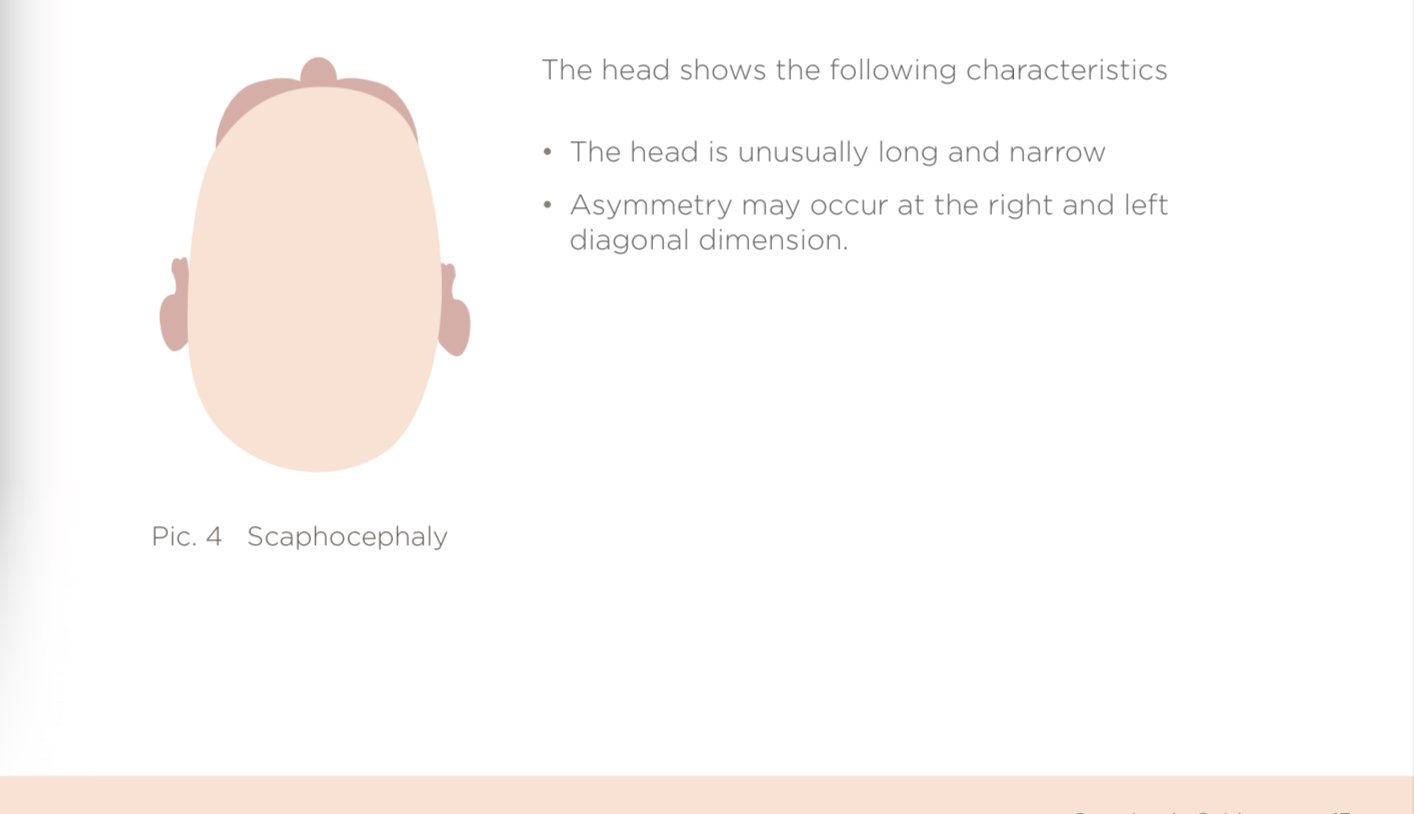
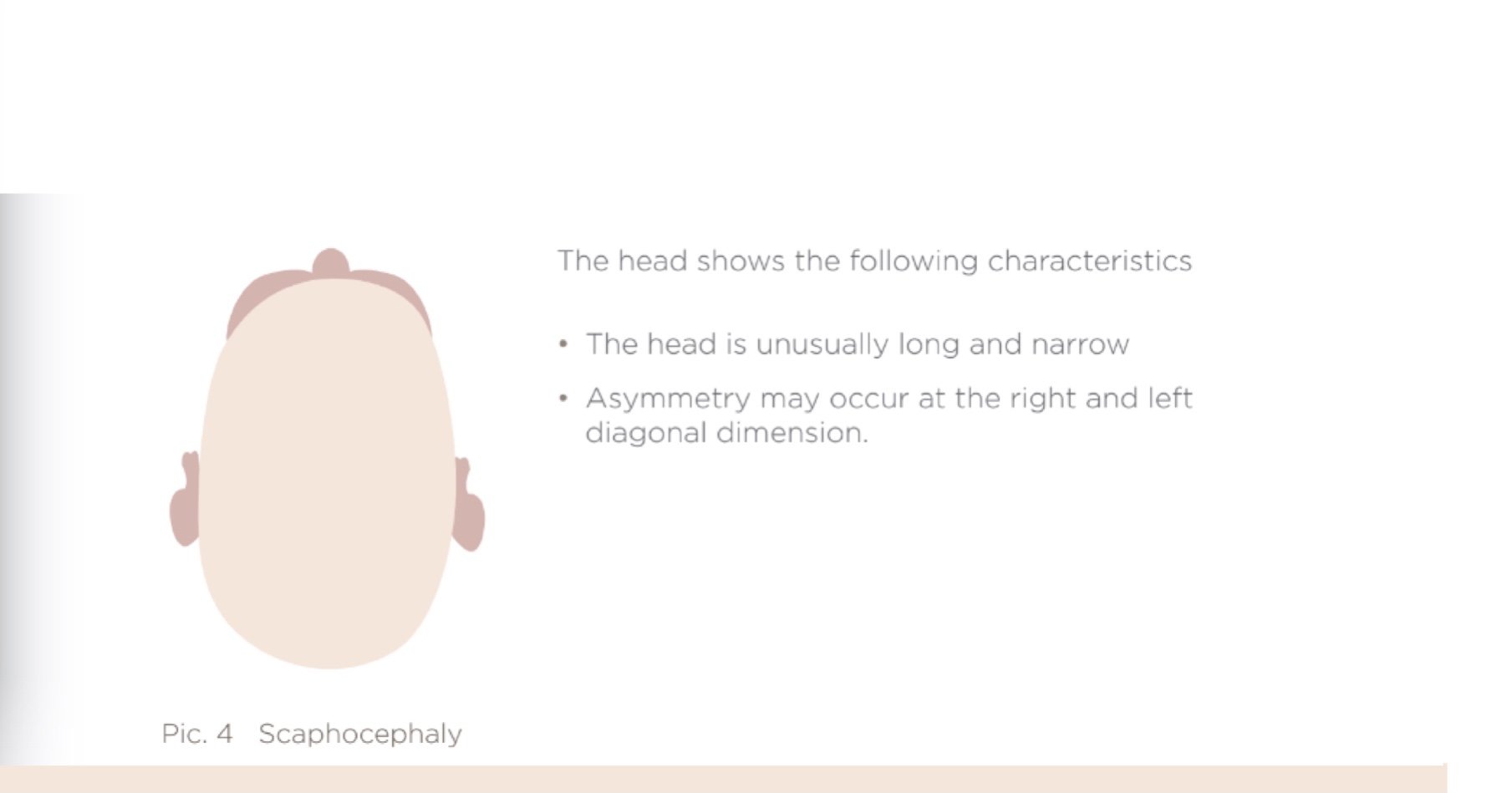
Citations
Section 1
*SIDS - sudden infant death syndrome. It seemed to occur most often when babies slept on their bellies.
**Deformational plagiocephaly: a follow-up of head shape, parental concern and neurodevelopment at ages 3 and 4 years; B L Hutchison, A W Stewart and E A Mitchell; Archives of Disease in Childhood September 2010.
***Effectiveness of Conservative Therapy and Helmet Therapy for Positional Cranial Deformation. Steinberg et al; Plastic and Reconstructive Surgery; March 2015




